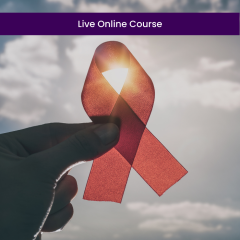Defending Norms and Secondary School Bullying (1 CE)
Number of Credits: 1
This course is for: Clinical Psychologists, Counselors, and Marriage & Family Therapists
Course By: Ken Springer, PhD
Content By: Laninga-Wijnen, L., van den Berg, Y. H. M., Mainhard, T., & Cillessen, A. H. N. (2021). The role of defending norms in victims' classroom climate perceptions and psychosocial maladjustment in secondary school. Research on Child and Adolescent Psychopathology, 49, 169-184. https://doi.org/10.1007/s10802-020-00738-0
Course Description: Recent studies have identified a "healthy context paradox" in which the the victims of bullying experience greater adjustment difficulties in more positive classroom environments. The present study examined whether this paradox is observed in positive classroom environments where there are norms for defending the victims. Two types of classroom norms were studied: Descriptive norms (the average extent to which students defend the victims of bullies) and popularity norms (the extent to which more popular students defend the victims of bullies). Based on questionnaires administered to 7th through 10th graders, the authors identified a healthy context paradox for descriptive norms, in that victims of bullying viewed their classroom climate as more negative and showed poorer adjustment in classrooms where there were stronger descriptive norms for defending them. In contrast, victims of bullying viewed their classroom climate as more positive and showed better adjustment in classrooms where there were stronger popularity norms for defending them. The results have implications for bullying-related interventions that focus on changing classroom norms related to defending the victims of bullying.
Learning Objectives:
- Understand the healthy context paradox and how research on this topic is extended by the present study
- Describe the main findings of this study concerning the ways descriptive and popularity norms affect secondary students' responses to bullying
- Integrate the strengths and limitations of the study, and summarize the clinical implications for bullying-related interventions
Course Outline:
- Read and understand The role of defending norms in victims' classroom climate perceptions and psychosocial maladjustment in secondary school
- Review the Course Description and Learning Objectives
- Describe how and why descriptive and popularity norms were expected to affect secondary students' responses to bullying
- Integrate the study's key findings, strengths, limitations, and clinical implications
- Work through the post-test questions, using the article as the sole basis for your answers
- Revisit the article for any missed questions and/or to better understand how descriptive and popularity norms each affect secondary students' responses to bullying
Approvals:
| Board Approvals | American Psychological Association (APA), NBCC, Florida Board - Social Work, MFT, Counseling, and Psychology, NYSED - Social Work, MFT and Counseling Only, American Academy of Health Care Providers in the Addictive Disorders |
|---|---|
| CE Format | Online, Text-Based |







